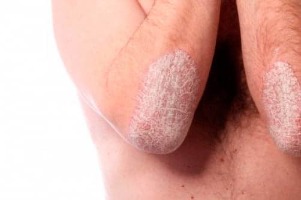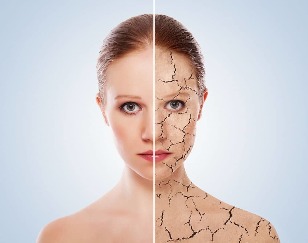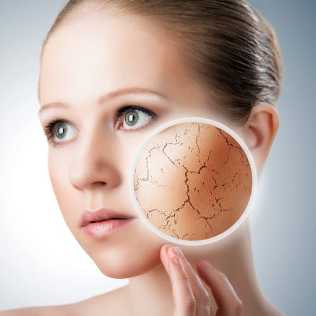
Despite the fact that psoriasis is a common and well-known disease, it is still not fully understood. And patients often do not know at all that psoriasis is not a bacterial infection and not a fungus, but a non-standard immune system reaction, caused by an unknown cause. Information on the causes and symptoms of psoriasis will be very useful for patients, as it will help overcome the disease.
What is this disease?
Lichen scaly is another name for psoriasis, and this name perfectly describes the disease. Psoriasis is manifested by the formation of inflamed plaques of different sizes on the skin, they are covered with thick skin scales.
Sure, almost everyone has heard of a disease like psoriasis. And this is not surprising, as scaly lichen is quite widespread. The disease is diagnosed in 4-10% of the world's population. Moreover, statisticians who gather information on the prevalence of psoriasis, argue that the number of patients is increasing.
Scaly lichen has been known to people since ancient times, even healers in Ancient Greece sought to cure the disease. The modern history of the study of psoriasis is about 150 years old. But over a considerable period of time, researchers have learned quite a bit about the causes and treatment of psoriasis.
Widespread, etiological uncertainties (causes of occurrence), ineffective treatments - all of which characterize psoriasis as one of the most difficult problems in dermatology.
Today, dermatologists consider psoriasis to be a complex systemic disease associated with disorders of the immune system, with impaired metabolic processes and the emergence of trophic disorders. This failure results in certain skin changes.
Therefore, while answering the question of what psoriasis is, a modern dermatologist will answer that this is a disorder of the trophic and metabolic processes on the skin caused by damage to the functions of the body system. Today, two theories on the etiology of psoriasis are considered most likely: genetic and viral.
- Genetic theory has many proponents, as psoriasis often acts as hereditary or family dermatosis. A thorough study of the patient's family history at 60-80% confirmed the presence of psoriasis in one form or another in the patient's relatives. However, in some patients it is not possible to confirm the fact of the origin of hereditary psoriasis. This situation is the reason for the allocation of these cases into special groups, where the main reason is not genetics, but phenotypic failure.
- Viral theory, which he says psoriasis develops as a result of infection, has its proponents. Confirmation of information about the origin of psoriasis is the detection of antibodies in the patient's blood, as well as the "basic elements" in the epidermal cells. According to this theory, psoriasis develops not only when infected with the virus, but also under certain conditions.
There are other theories that explain psoriasis. For example, endocrine, neurogenic, metabolic, and others. Naturally, all of these theories are not baseless, and their studies allow you to get more important information about psoriasis. However, today it is certainly known that the state of the endocrine and nervous systems, as well as the work of the gastrointestinal tract, do not cause psoriasis, but they have a significant effect on the course of the disease.
For example, pathology affecting the liver leads to the fact that the quality of blood purification performed by this organ is greatly reduced. And this, in turn, can provoke the appearance of various skin appearances, including psoriasis.

Pathologies affecting the liver (hepatitis, primary cirrhosis, etc. ) lead to the fact that the tissue of this organ is reborn, i. e. the liver is gradually replaced by connective tissue. As a result, the liver ceases to function. Externally, this is indicated by yellowing of the mucous membranes and skin, and the development of skin diseases, including psoriasis, is possible.
There is also an inverse relationship, psoriasis is often accompanied by fat degeneration, which affects the liver. Therefore, in the treatment of this skin disease, it is important to follow a diet so as not to burden the liver unnecessarily. Patients are advised to limit fatty foods, eliminating alcohol completely.
Therefore, although there are many studies, it is not possible to get an accurate answer to the question of what psoriasis is. However, work is ongoing, so it is possible that this mysterious disease can be solved, and we will learn a lot about psoriasis skin diseases.
International Classification
Psoriasis manifests itself in various forms. To make it easier for experts to navigate, the generally accepted classification of psoriasis is used.
Adds psoriasis to the International Classification of Diseases (ICD). To date, 10 revisions of the International Register of Diseases have been used, hence the abbreviation ICD 10. is used. Work began on 10 revisions of the International Classifier of Diseases in 1983 and was completed in 1987.
Basically, ICD 10 is a standard assessment tool used in medicine and health administration. The Guidebook in Review 10 is used to monitor the occurrence of various diseases and other health problems.
Using version 10 of the ICD, it is possible to compare data on morbidity and mortality in different countries, which makes it possible to obtain statistical data and systematize diagnostic information. With the consent of WHO members, ICD 10 is used to code for various diseases. In the 10th version of classifier, alphanumeric codes are applied, with the help of which it is easy to store information in electronic form.
All types of psoriasis are included in ICD 10, and each is given a specific code. In dermatology, the following forms and types of psoriasis are distinguished:
- Normal psoriasis(synonyms: vulgar, moderate, plaque-like). The disease has been coded according to ICD 10 - L-40. 0. This is the most common form, it is observed in 80-90% of patients. The main symptom is the formation of plaques, which are raised on the surface of the skin that do not change, covered with white gray skin scales. This shape is characterized by a small crust. After its removal, the inflamed red skin opens up, which is very easily injured and begins to bleed. During the inflammatory process, the plaque can increase significantly.
- Reverse psoriasis. It is a disease that affects the folds of the skin (flexor surface). For this form of the disease, code L83-4 is used in ICD 10. Dermatosis appears with the formation of folds on the skin of smooth spots or minimal fragments. Deterioration of the condition is observed when the skin is injured due to friction. The disease is often transmitted by streptococcal or fungal infections.
- Guttate psoriasis. This form of psoriasis is characterized by the formation of a large number of small red or purple spots on the skin, resembling the shape of water droplets. According to version 10 of the international classification, such diseases receive the L4 code. Often, intestinal psoriasis affects the skin of the feet, but a rash can occur on other parts of the body. At the same time, it is known about tear psoriasis that it develops as a complication after streptococcal infection - pharyngitis, tonsillitis, etc.
- Pustular or exudative psoriasisis a severe form of skin, according to ICD 10 it is coded L1-3 and L 40. 82. It is characterized by the formation of blisters or pustules. Skin on edematous lesions, red, inflamed, peeling easily. If fungi or bacteria penetrate the pustules, the contents of the pustules become purulent. Pustular psoriasis often affects the distal end, but in the most severe cases, the general process can develop with the spread of the rash throughout the body.
- Psoriatic psoriasis or arthropathic arthritis. According to version 10 of the ICD pathology, code L5 is given. It is manifested by inflammation of the joints. Arthropathic psoriasis can affect all types of joints, but most joints in the phalanx on the toes and hands become inflamed. Knee, hip, or shoulder joints may be affected. Lesions can become so severe that they can cause the patient to become deformed. Therefore, you should not think of psoriasis as an exclusive skin disease. Severe types of psoriasis can cause systemic damage, disability or death of the patient.
- Eritrodermic psoriasis. A rare but severe type of psoriasis, according to ICD 10, the disease receives code L85. Erythromodic psoriasis often manifests itself in general, the whole or almost the entire surface of the skin can enter the affected area. The disease is accompanied by itching, swelling, severe pain.
- Onychodystrophy psoriatic or psoriasis nail. According to version 10 of the ICD, the disease is coded L86. Pathology is indicated by changes in the appearance of nails on the toes and hands. Nails can change color, become thicker, and begin to deteriorate. Complete nail loss is possible.

In psoriasis, the classification of the disease not only considers the type of disease, but also the severity of the symptoms:
- Local psoriasis is a disease in which less than 20% of the skin is affected;
- Widespread psoriasis affects more than 20% of body surface;
- if almost the entire surface of the skin is affected, we are talking about universal psoriasis.
If we consider all types of diseases, then common psoriasis is more common than other forms.
Flow level
Psoriasis is limited or widespread through three stages: progressive, stable and regressive.
Here are the features of the progressive stage of psoriasis:
- the appearance of a new rash;
- existing plaque growth;
- the appearance of new rash elements at the site of skin injury (scratches, abrasions);
- scaling of existing plaques.
The following symptoms are characteristic of immobile psoriasis levels:
- no new elements appear;
- exfoliation of simple elements;
- no signs of element growth.

The appearance of folds in the stratum corneum around the element is a sign of transition from stationary to regressive.
The degree of regression is characterized by the following types of symptoms:
- decreased exfoliation intensity;
- element resolution.
After the release of psoriatic plaque, hypo or hyperpigmentation spots remain in place.
Scaly lichen is characterized by long journeys with periodic deterioration. The following types of psoriasis are distinguished:
- winter (worsens in autumn and winter);
- summer (with an increase in warmer periods);
- Overtime psoriasis is the most severe type, as there is no clear link between relapse and this year’s season, the duration of remission may not exist.
Diagnostic Features
If psoriasis has a common clinical picture, then the diagnosis will not be so difficult. However, the disease is often disguised as another pathology.
For example, nail psoriasis is often mistaken for nail fungus, because the external manifestations in the early stages of the disease are very similar. However, nail fungus and psoriasis are completely different, so treatment should be different.
The public can make mistakes on psoriasis and fungi for fungi. Because mycoses of the skin (skin fungus) are indicated by a similar symptom - the formation of scaly plaques. Therefore, after seeing suspicious symptoms on the body or nails, you do not need to diagnose yourself and continue reading to treat the fungus using pharmaceutical drugs or folk remedies.
If the diagnosis is wrong, and in fact, the cause of the symptoms is not a fungus, but psoriasis, then the treatment will not be beneficial, but, on the contrary, will worsen the symptoms.
When contacting a dermatologist, an analysis will be made for the fungus, scratches will be taken from the nail or skin. Then the resulting material is placed in nutrient media. If the fungus is present in the material, large colonies will grow in the test sample after a few days. With the appearance of the material, we will be able to understand the type of fungus that causes the infection.
Sometimes psoriasis becomes complicated by the addition of a secondary infection, it can be a bacterial or fungal infection. Therefore, when the clinical picture changes (the appearance of purulent discharge, plaque discoloration, etc. ) , the patient should be periodically tested for fungi and other infectious agents.
, the patient should be periodically tested for fungi and other infectious agents.
In the diagnostic process, a specific role is assigned to a group of phenomena called psoriatic triads. The phenomenon appears sequentially, when scraping the rash element.
The psoriatic triad looks like this:
- when scraping the rash element, scales are removed in the form of "shavings";
- After removing the chips, a thin transparent film similar to open polyethylene;
- when the film is damaged, the exact bleeding will open.
A dermatologist diagnoses psoriasis, but if necessary, the doctor can refer the patient to consult with other specialists - rheumatologists, gastroenterologists, surgeons, etc.
Interesting facts about psoriasis
People have long known about psoriasis. Even the name of this disease enters our language from ancient Greek. In the prosperity of Ancient Greece, the word "psora" meant all skin diseases manifested by peeling and itching.
The first person to write a detailed treatise on psoriasis was a Roman named Cornelius Celz. In the fifth volume of his work "De Medicina" there is a broad chapter on the disease.
They know about psoriasis, but the disease is not clearly diagnosed, as it is called, sometimes "imperial", then "evil" disease.
Of course, ancient healers knew little about psoriasis. Until the 19th century, the disease was often mixed with other skin diseases. Psoriasis was first identified as an independent form of nosology in 1799. This was done by British dermatologist Robert Villan, who selected psoriasis from a wide range of skin diseases, characterized by itching and flaking.
Not just ordinary people, but also leading political figures who know about psoriasis directly. For example, Winston Churchill, who suffers from this disease, promises to erect a pure gold monument to someone who can learn everything about psoriasis and offer effective treatment for the disease.
Modern understanding of the disease
It should be said that modern science does not know much about this mysterious disease. There are various theories about the origin, as well as the course and treatment of psoriasis.
Here are some facts about psoriasis that are beyond doubt:
- although the cause of the disease is not clear, it is possible to find out about the nature of psoriasis. The disease is autoimmune, which is caused by damage to the immune system;
- another fact about psoriasis: the disease can be inherited. However, this is not always the case, even if both parents are ill, the risk of developing the disease in their child is 65%. At the same time, some patients suffer from psoriasis, although none of their relatives are ill;
- An interesting fact about psoriasis is that the disease is characterized by the Kebner phenomenon. This phenomenon manifests itself in the fact that the elements of the rash form in the places of skin lesions - scratches, burns, frostbite. Sometimes psoriasis appears after a while, in the scar;
- An important observation that allows you to get more information about psoriasis is the relationship of this disease with climatic factors. Exacerbations and relapses often coincide with seasonal changes;
- Patients may be aware of the relationship between stress and stress in practice. All patients should know for sure that the disease is recurrent or worsens its course with a background of tension and nervous experience;
- A new fact about psoriasis is that the disease can appear at any age, although it was previously believed that lichen scaly occurs after 30;
- It is important for everyone to know that psoriasis is not a contagious disease. Even with close contact with the patient, there is no risk of infection;
- almost everyone has heard of incurable psoriasis, and this is true, because there is no cure that can cure this disease. But patients should be aware that psoriasis can be controlled. Adequate and timely treatment makes it possible for long-term remission.
Modern treatment methods
Talking about common psoriasis, one cannot tell about the treatment of this common disease. It should be said that it is impossible to cure psoriasis with just a tablet or ointment.
To forget the manifestations of psoriasis for a long time, patients, in close cooperation with the doctor, need to work. You need to organize the food properly. Some experts argue that it is possible to forget about psoriasis forever only with the help of a properly formulated diet and regular body cleansing.
The doctor will devise an initial scheme of treatment. As a rule, methods of external therapy (ointments, creams) and systemic therapy (tablets, injections) are used. In addition, physiotherapeutic methods will be used, and treatment at the resort is recommended. Recommended for the treatment of psoriasis using healing mud, minerals and thermal water.
Resorts can also offer non-traditional treatment methods. For example, with the help of fish that live in thermal springs. This little healer effectively removes dead skin scales and disinfects the skin, increasing its healing speed.
Can offer other treatments for scaly lichen at the resort. For example, leech therapy, healing and application baths, sunlight therapy, etc.
You need to be prepared for the fact that the treatment regimen will change periodically. Because not all methods are suitable for a particular patient. If the treatment chosen does not work, the treatment needs to be replaced.
Alternative treatments for psoriasis are also widely advertised. Indeed, some of them can help achieve forgiveness. However, when choosing a method, you need to remember about common sense so as not to endanger your health. If the recipe or suggestion is in doubt, then it is better not to use it. Consult a doctor before using any treatment method.
You need to understand that it is possible to forget about psoriasis forever only if the patient himself and his environment are positively adjusted. Only belief in success and optimism will help overcome this mysterious and dangerous disease.























